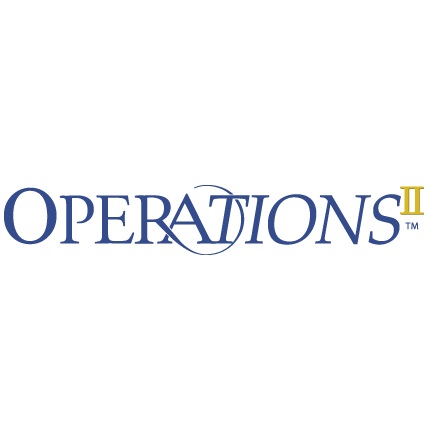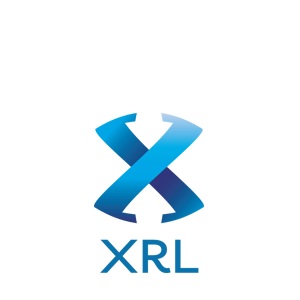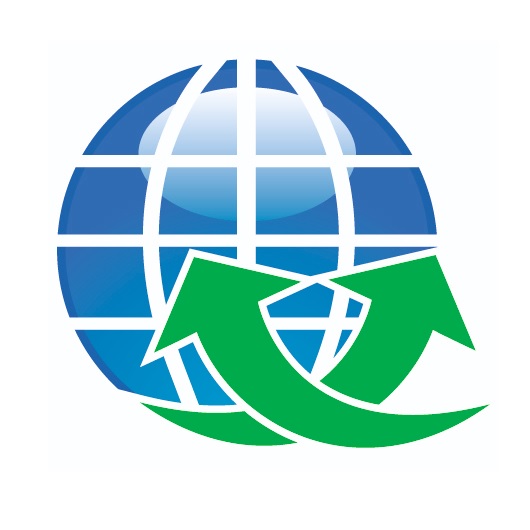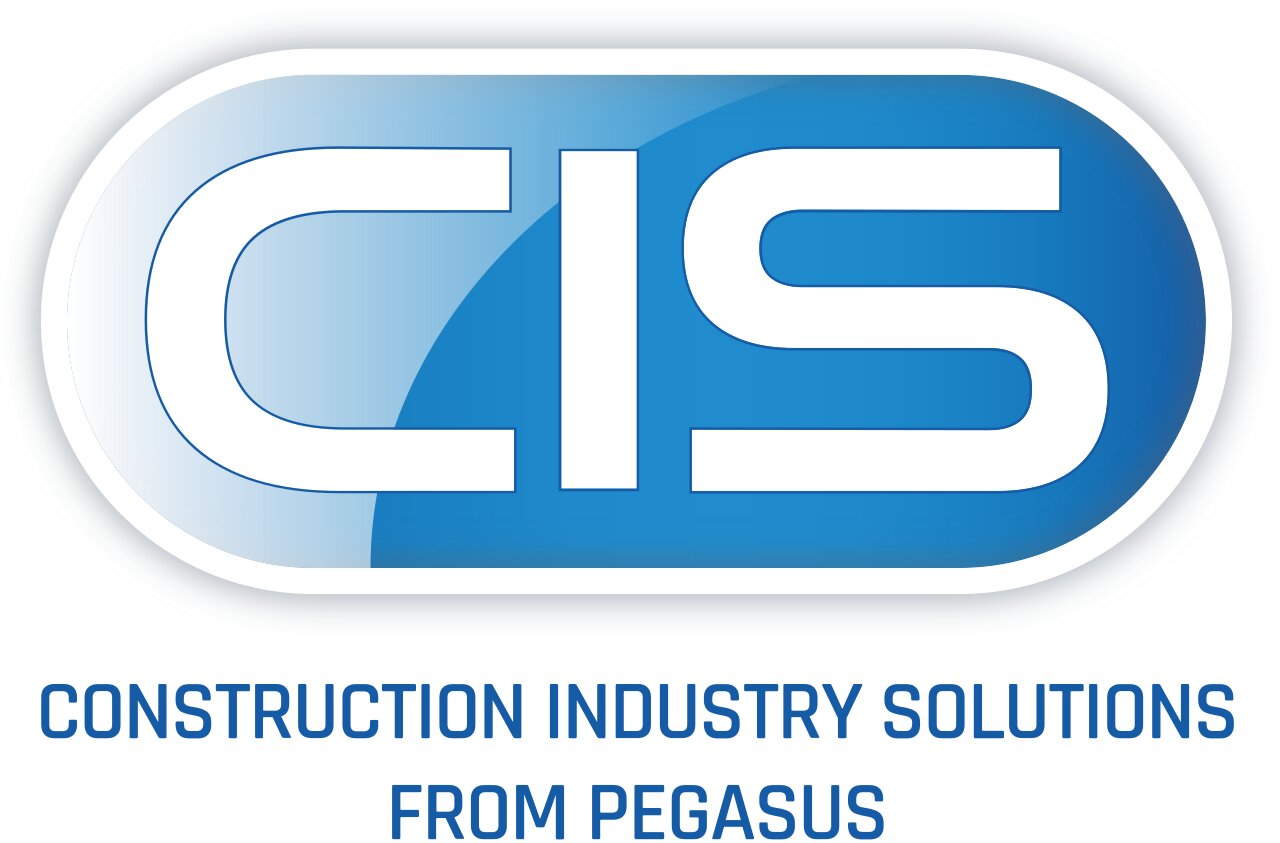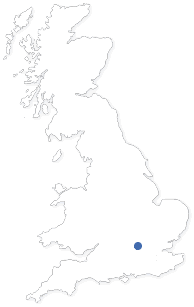Previous releases from Microsoft® Dynamics NAV

- Microsoft Dynamics NAV 2017
- Microsoft Dynamics NAV 2016
- Microsoft Dynamics NAV 2015
- Overview
Microsoft® Dynamics NAV 2017
NAV 2017 is the latest release from Microsoft, and there are a whole host of new features within NAV, new functionalities and ways to work, and you can work wherever and whenever using our on premise and cloud solutions.
- Setup and Configuration: Setup is simple and fast, Profile’s dedicated NAV engineers can import data and set up Office 365 integration with minimal involvement from you or your colleagues, there's no worrying about losing important information. Assisted setup wizards allow you to simplify tasks like workflow, and improved cash management makes it easier to set up cash flow forecasting, gathering data from relevant sources to provide you with a complete overview.
- User Experience: NAV 2017 incredibly simple to use, instantly recognisable to anyone who has used a Microsoft Office program before, so new users won't need to learn a whole new system from scratch. You can accomplish more in your browser-based interface, and new wizards simplify new concepts and make data entry easy.
- In Office 365 Experience: NAV 2017 works inside Office 365, NAV data works seamlessly with office programs and tools including outlook and excel. You can sync and update contacts in outlook using NAV and vice versa with Exchange Web Services, changes made on either end are reflected without you having to do double the work.
- Items: Organise and classify your product the way you want, performing advanced searches on your catalog in just a few clicks and displaying only the information that you need. Creating custom attributes and assigning an item attribute value helps you manage items and create sales documents, and adding attributes and values allow you to see and filter them all, making it more efficient to add an item to a sale and purchase document.
- Finance: Work with ready-to-use financial statements and gain accessible insights into the financial performance of your business. New account schedules mean no set-up is required, making financial reports quick and intuitive to produce. Point-in-time reporting means you can view the financial state of your business for any given time.
- Jobs: Jobs are now more straightforward, helping you manage projects, see more details, set up a job and enter a timesheet using a new, simple wizard, and the updated project manager role centre lets you quickly access common tasks, new charts and a new 'My Jobs' list.
- Cortana Intelligence: Cortana’s smart data handling can find patterns in your existing data and create predictions and insights to enhance how you manage your stock, and this works in different areas of NAV to produce different results, it can predict how customers will react and respond to marketing campaigns and how an item will sell based on previous sales data.
- E-Everything: Make it easier for your customers to pay invoices online with hyperlinks to payment services like Paypal, which accept & support credit & debit cards.
- NAV 2017 capabilities include: Financial Management, Supply Chain Management, Manufacturing, Project Management, Sales, Marketing and Service Management, and Human Resources Management.
For more information regarding NAV 2017, or to book a demo, please contact your account manager, email us at This email address is being protected from spambots. You need JavaScript enabled to view it. or call our office on 01442 236311.Dynamics NAV 2016 is highly adaptable and rich with new features, with emphasis on mobility, business insight and cloud services. Your business management solution is a critical part of your organisation; you can boost productivity, reduce costs and improve your customer service.No matter what size your business is, NAV 2016 creates greater efficiencies, streamlined business processes and empowers employees with insights anywhere and on any device. With the latest technology advances, NAV allows your business to scale and grow securely through the power of the cloud.
Keeping your solution up-to-date is essential to the future of your business. Compare your current release of NAV with the latest 2016 to see what you’re missing: https://www.microsoft.com/dynamics/upgrade-compare/nav/default.html
Functionality enhancements include:
• Financial enhancements to save time and ease data
Now you know a little more about the new Microsoft Dynamics NAV 2016, please contact your Account Manager on 08000 195 101 to discuss how Microsoft Dynamics NAV can continue to grow with you as a company; we look forward to hearing from you.
• Document capture
• Workflows feature to model real-life business processes
• Microsoft Power BI dashboards and data connections
• Automatic currency exchange rates
• Windows 10 Universal App
• Over 60 Web-client enhancements
• CRM Online
• Availability in the cloud with the option to deploy on Microsoft Azure SQL DatabaseIf you are already using Microsoft Dynamics NAV 2013 or an earlier version, we'd like to provide all the reasons why your company will benefit from upgrading to the latest technologies from Microsoft - Dynamics NAV 2015.
By simplifying day-to-day functions and processes, you will decrease operating expenses while improving cash flow. The new enhancements with Microsoft Dynamics NAV 2015 continue to ensure that your company can make more users more productive, whilst growing with your company.
The main functionality improvements are:
Simplified Payment Reconciliation You must routinely reconcile your bank, receivables, and payables accounts by applying payments recorded in your bank account to
their related unpaid invoices and credit memos or other open entries in Microsoft Dynamics NAV, which you then post as payment applications.
You can import a bank statement file from your bank to quickly register the payments in Microsoft Dynamics NAV.
During import, or when you activate it, an automatic application function will apply the payments to their related open entries based on a matching of dataon payments with data on open entries. You can use various functionality to review and change automatic applications and to make manual applications before you post the payment reconciliation journal.
In the Payment Reconciliation Journal window, you reconcile payments by performing two main activities:
Import bank statement files representing payments that have been made to or from your bank account and then automatically apply each payment to one or more open entries where it is possible.
Review and manually apply payments that could not be applied automatically or were applied with low or medium confidence. In the Payment Application window, you view detailed information about matched data and get suggestions for candidate open entries to apply the payment to.Improvements for Payment Export If you do not want to post a payment journal line for an exported payment, for example, because you are waiting for confirmation that the transaction has been processed by the bank, you can just delete the journal line.
When you later create a payment journal line to pay the remaining amount on the invoice, the Total Exported Amount field shows how much of the payment amount has already been exported. Also, you can find detailed information about the exported total by choosing the Credit Transfer Reg. Entries.
A SWIFT code is no longer required for domestic bank transfers using the SEPA standard. Therefore, you are no longer prompted to fill the SWIFT Code field on the company bank account, vendor bank account, or customer bank account when you export payments into the SEPA Credit Transfer format.Use Due Date as Posting Date in the Payment Journal When you use the Suggest Vendor Payments batch job to create payment journal lines, you have options on the request page to automatically insert the due date as the posting date, plus/minus any number of days. Bank Data Conversion Service A global provider of services to convert bank data to any file format that your bank requires is set up and connected in Microsoft Dynamics NAV by default. All you have to do is to activate the service in your installation by entering the service logon information in the Bank Data Conv. Service Setup window.
You can use the Bank Data Conversion Service feature to have a bank statement file that you receive from your bank converted to data that you can import into Microsoft Dynamics NAV. Reversely, you can use the conversion service to have payment information that you export converted to a bank payment file in the format that your bank requires.
The bank-account setup and user functionality for importing and exporting bank files that are processed by the bank data conversion service is the same as when you import/export bank files of a supported file standard, such as SEPA.SEPA CAMT Bank Statement Import For automatic payment processing and bank reconciliation based on bank statements in the SEPA CAMT format, you can use a bank file import function to quickly populate the Payment Reconciliation Journal and Bank Acc. Reconciliation windows. You select from enabled file formats in the Bank Statement Import Format field in the Bank Account Card window. Manage and Create Report Layouts In earlier versions of Microsoft Dynamics NAV, report layouts were based on RDLC. In Microsoft Dynamics NAV 2015, report layouts can also be created with Word 2013. From the Microsoft Dynamics NAV client, you can change which layout a report uses when viewing, printing, and saving the report. In addition, you can create and modify your own custom RDLC and Word report layouts. Custom Word and RDLC Report Layouts From the Microsoft Dynamics NAV clients, you can design the layout of Microsoft Dynamics NAV reports by using Microsoft Word 2013 or SQL Server Report Builder. Microsoft Dynamics NAV 2015 includes several built-in report layouts that are used on reports by default. You can use the built-in report layouts as a starting point for customizing your own layouts. This enables you to set up multiple variations of layout for the same report, which you can switch among when viewing, printing, and saving the report. Verify VAT Registration Numbers You can use an EU web service to verify that VAT registration numbers that you enter on customer, vendor, or contact cards are valid.
When you modify the VAT Registration No. field on a card where the value in the Country/Region Code field is an EU country/region, then the new VAT registration number and your user ID are logged in the VAT Registration Log window. To verify a VAT registration number, you can choose the DrillDown button next to the VAT Registration No. field to open the VAT Registration Log window and then start the verification function.Certificates of Supply for VAT Reporting When you sell goods to a customer in another EU country/region, the customer must confirm receipt before you can deduct VAT or calculate zero VAT according to the rules for intra-community trade. Microsoft Dynamics NAV provides support for creating and processing the required certificates. Coloured Indicators on Cues A Cue is a tile on the Role Center that provides a visual representation of business data, such as the number of open sales invoices or the total sales for the month. You can configure the Cue to include an indicator along the top border that changes colour based on the data in the Cue. Mandatory Fields When you enter data on pages in Microsoft Dynamics NAV, certain fields are marked with a red asterisk. The red asterisk means that the field must be filled to complete a certain process that uses the field, such as posting a transaction that uses the field value. Total and Discount Amounts Placed on Sales and Purchase Documents To always have an overview of the current total invoice amount and discount amount, five FlowFields are included under the Lines section on all active and posted sales and purchase documents: Total Excl. VAT (LCY), Total VAT (LCY), Total Incl. VAT (LCY), Invoice Discount Amount, and Invoice Discount Percent. In earlier versions of Microsoft Dynamics NAV, you could only see these amounts in the Statistics window. Microsoft Dynamics NAV
This release is significant as it delivers several new productivity benefits to users, so please take a moment to find out about the changes Microsoft Dynamics NAV could offer your business and if you would like to discuss upgrading or how Microsoft Dynamics NAV could work for your business please call us on 08000 195101 or contact us.
With features such as Microsoft Dynamics CRM online integration and Role Tailored Access for Remote and Roaming Users, this release will provide new ways to take advantage of the RoleTailored user experience with exciting business data visualization capabilities, more integration with the Microsoft stack including Windows 7 user experience integration, integration with Microsoft CRM and other improvements that empower your employees to be more productive through intuitive and faster ways of working.
For more information about Microsoft Dynamics NAV, click on the feature titles below:Microsoft Dynamics CRM Online Integration Today, more than ever, business managers realize the importance of understanding their customers in order to serve them better and remain competitive in a dynamic market. Many companies use a CRM system to manage their customers, contacts, and sales order information, and an ERP system such as Microsoft Dynamics NAV to manage their back office operations. However, they are not always able to synchronize the information in their CRM system with the information in their ERP system. At the end of the day, companies lose time, data, and valuable customer knowledge and insight trying to keep information up to date in both systems.
Microsoft Dynamics NAV delivers integration with Microsoft CRM enabling companies to increase productivity across the organisation. The integration is enabled using the Connector for Microsoft Dynamics, which utilizes Web Services to retrieve data in Microsoft Dynamics NAV and Microsoft CRM and synchronize the data between the two systems.
Customers have the flexibility to choose between integration to hosted or on-premises Microsoft Dynamics CRM or Microsoft Dynamics CRM Online with the option to migrate to either option over time. If you would like to discuss using Microsoft Dynamics CRM with Microsoft Dynamics NAV then please contact us on 08000 195101.RoleTailored Client Access for Remote and Roaming Users A key goal for Microsoft Dynamics NAV is finding cost-effective ways to increase productivity for more people across you company. One way to do this is by extending the value of the RoleTailored Client to more users, including remote or roaming users.
Microsoft Dynamics NAV supports direct access from the Microsoft Dynamics RoleTailored experience over the Internet. This enables remote or roaming users to take advantage of the richness of the RoleTailored interface and the many integration features connected to local resources, such as printers, the operating system, and Microsoft Office. It is possible to export Microsoft Dynamics NAV data to Microsoft Office applications without having to add the cost of a terminal server.
This new feature in Microsoft Dynamics NAV includes an authentication dialogue box that will prompt for user credentials and the ability to add a secure socket layer (SSL) certificate to the NAV Server. If you would like to discuss how and the Remote and Roaming Client access could work for your company, please call us on 08000 195101.Treemap Analysis and Timeline Visualization The saying "A picture speaks a thousand words" may be the best way to explain the new business data visualization capabilities in Microsoft Dynamics NAV . In a dynamic business environment, you as managers must make business-critical decisions quickly and without hesitation. You may turn to the wealth of data in your business system for answers but struggle to absorb and understand the large amounts of data quickly. Furthermore, when it is time to make a decision, you may not have a complete picture of all the options available to them as well as the consequences of those options.
Building on the client extensibility capabilities in Microsoft Dynamics NAV SP1, the new business data visualization capabilities in Microsoft Dynamics NAV include Treemap and Timeline business data visualizations. These are RoleTailored client control add-ins that provide a unique way to view and analyze business data in Microsoft Dynamics NAV. This capability gives companies a powerful way to make informed and more accurate decisions by enabling managers to:-
Picture the business (delivers mental models).
Visualizations provide a mental model for business data and data dependencies. By seeing a visual representation of data and data dependencies, even non-expert users can more easily understand business data. -
Understand the business; know state and trends, provided by insight.
Visualizations are an entry point for understanding the current state of a business and trends. Users can drill down and filter data to provide intuitive, ad hoc analysis. -
Know how to act; identifying actionable items and tasks.
Users can use business data to find items of interest and outliers that are based on certain objectives or measures. Those outliers can be converted into high-priority actionable tasks and possible actions. -
Act wisely; it provides decision support, problem solvers, and optimization.
Problem solvers and optimizers help users decide on a strategy. They can provide suggestions for an action strategy that can lead to an optimal result for one or more objectives. -
Understand consequences; allowing you to visualize consequences before acting.
Visualizations help users understand the impact of actions before they are committed. Visualizers can account for dependencies, predict the outcome of actions, and provide visualizations to users.
If you would like to discuss how the Treemap Analysis and Timeline Visualization feature could work for your company please contact us on 08000 195101.Windows 10 User Experience Improvements Microsoft Dynamics NAV will support the usability and visual improvements in Windows 7. These deliver significant productivity benefits by making it easier to access and see frequently used programs, documents, links, and more.
Microsoft Dynamics NAV users will be able to take advantage of familiar Windows 7 features such as Jump Lists, Taskbar Preview, Thumbnail Preview and Icon Overlay functionality from the Role Center.
In Windows 10, Jump Lists take you right to the documents, photos or websites you use each day. In Microsoft Dynamics NAV , Jump Lists will take you to your preferred Microsoft Dynamics NAV actions, tasks and pages such as contacts, vendors, invoices, sales orders, sales quotes, and more. It will also be able to configure the Jump Lists according to the user's role to gain a RoleTailored experience.
This release will also support icon overlay for warnings, errors and progress information, which gives the user immediate status information on programs and activities from the Windows 10 taskbar. The user will also be able to place their mouse over the Microsoft Dynamics NAV icon on the task bar to see a thumbnail preview of each open window including company name for quickly identification of the company. All of these usability enhancements help improve navigation and minimize the number of clicks required to reach the information you need.
In addition to the Windows 10 user experience improvements, Microsoft Dynamics NAV will include other enhancements that improve the way users interact with the application. For example, the Filter on Subforms feature makes it easier for your users to get to the information they need faster. It can sometimes be difficult to find specific information, like a certain item number, on a large purchase order containing many lines of information. Since there is no search option available, the user must scroll through the entire order to find the information they need. This slows productivity. In Microsoft Dynamics NAV , it is possible to find specific information by applying the filter to specific items on an order or across all orders.
In addition to the Windows 10 user experience improvements, Microsoft Dynamics NAV will include other enhancements that improve the way users interact with the application. For example, the Filter on Subforms feature makes it easier for your users to get to the information they need faster. It can sometimes be difficult to find specific information, like a certain item number, on a large purchase order containing many lines of information. Since there is no search option available, the user must scroll through the entire order to find the information they need. This slows productivity. In Microsoft Dynamics NAV , it is possible to find specific information by applying the filter to specific items on an order or across all orders.
It will also be possible to set up printer selection for reports from the RoleTailored Client. This means that a specific report will always print to a specific printer so the user does not have to select the correct printer every time.
If you would like to discuss how Microsoft Dynamics NAV could work for your company, or if you would like to arrange an upgrade please contact us or call us on 08000 195101 to discuss this with a member of our team or your Account Manager.-






 Sage 50 Accounts is designed to help small and growing businesses manage their finances (accounts, customers and suppliers) and is an important part of the Sage 50 Suite.
Sage 50 Accounts is designed to help small and growing businesses manage their finances (accounts, customers and suppliers) and is an important part of the Sage 50 Suite.



